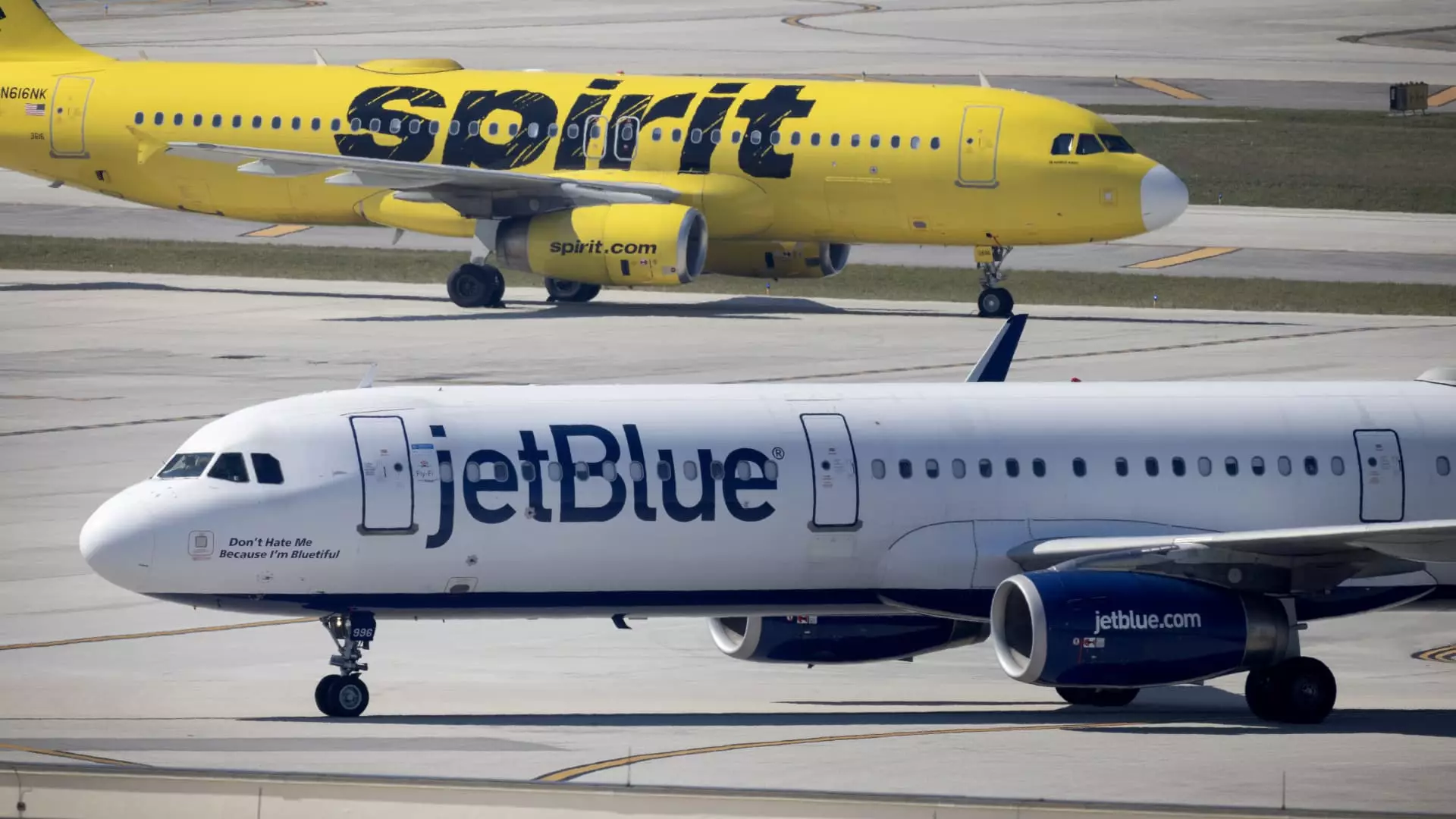The much-anticipated merger between JetBlue Airways and Spirit Airlines has come to an abrupt end, following their recent loss in a federal antitrust lawsuit challenging the deal. The CEOs of both airlines cited regulatory hurdles as the primary reason for terminating the merger agreement. The initial proposal was aimed at fostering better competition against the dominant large airlines that currently control the majority of the U.S. market. However, a federal judge’s ruling in January, blocking JetBlue’s attempted takeover of budget carrier Spirit, put a halt to the merger plans.
Despite JetBlue and Spirit’s appeal against the judge’s decision, the outcome seemed inevitable. Both airlines had tried to move forward with the merger, but the Department of Justice’s continued opposition threw a massive roadblock in their path. The probability of the merger receiving the green light in the near future was deemed extremely low. JetBlue CEO Joanna Geraghty expressed her disappointment in a note to staff, highlighting the strategic plan to challenge industry norms and provide growth opportunities for the companies and their employees. However, Judge William Young’s concerns over the negative impact on cost-conscious travelers relying on Spirit’s low fares ultimately led to the downfall of the merger.
With Geraghty taking over as CEO from Robin Hayes, JetBlue aimed at curbing losses, enhancing operational efficiency, and reducing costs. The sudden interest shown by activist investor Carl Icahn, acquiring a significant stake in the airline on Geraghty’s first day, added another layer of complexity to the situation. JetBlue’s failed merger with Spirit was seen as a missed opportunity to revitalize the struggling budget airline, which was already facing financial challenges due to the grounding of a significant number of its Airbus planes. Spirit Airways expressed its determination to address these financial woes independently, emphasizing its initiative to refinance debt and focus on profitability.
The termination of the merger between JetBlue and Spirit prompted both airlines to reassess their strategic priorities and goals. While JetBlue’s aspiration to disrupt the industry through mergers faced regulatory resistance, Spirit’s resilience as a standalone entity was put to the test. As the airlines navigate through this challenging period, finding ways to enhance profitability and improve customer experience will be crucial. Spirit Airlines’ optimistic revenue projections for the first quarter indicated a potential turnaround in its financial performance, showcasing its ability to weather storms independently.
The failed merger between JetBlue Airways and Spirit Airlines serves as a cautionary tale of the complexities involved in large-scale corporate transactions. Regulatory scrutiny, competitive dynamics, and financial challenges all played a role in derailing the merger plans. As both airlines regroup and chart their respective paths forward, they will need to focus on sustainable growth strategies and operational resilience to thrive in an increasingly competitive aviation industry.

